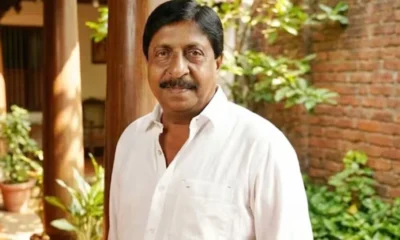India News
Polls in mind, Modi govt cleared a number of decisions in what could be its last Cabinet meet
Published
7 years agoon
By

[vc_row][vc_column][vc_column_text]
In what could be its last Cabinet meeting before the Lok Sabha election is announced and model code of conduct kicks in, Modi government on Thursday, March 7, approved a raft of decisions designed to win over different sections.
The Union Cabinet and the Cabinet Committee on Economic Affairs (CCEA) together approved 30 decisions, which included decision on posts open for reserved categories in Universities, a deal for sugar mills, projects for Delhi Metro, a committee to draw up norms for unauthorised colonies, setting up 50 Kendriya Vidyalayas (KV), a push to infrastructure and power projects and expanding health insurance benefits to ex-servicemen.
Since last week, Cabinet and CCEA have together taken 96 decisions.
Reservation quota in Universities
The Union Cabinet cleared an Ordinance on reservation mechanism for appointment of faculties in universities. Earlier this week, Human Resource Development Minister Prakash Javadekar said the Centre was committed to restoring the reservation roster in educational institutions following a series of protests over the issue by various students’ and teachers’ organisations.
The political implications of the decisions were evident in clearing the Ordinance on the changed reservation policy for faculty recruitment in universities and colleges that would lead to the consideration of the institution, rather than individual departments, as a unit for calculating reserved category seats.
An Allahabad High Court order in July 2017 mandating universities to make department-wise appointments had resulted in a major reduction in the number of reserved category seats. Petitions filed by the Union Human Resources Development Ministry in the Supreme Court were dismissed.
The stand by the courts had led to major changes in the roster system, which had provoked pushback from leaders representing scheduled caste and scheduled tribe communities. It was argued that the new system drastically reduced the number of reserved seats.
The ordinance reverses the courts’ stand and classifies an entire university or college as a single unit for determining Scheduled Caste (SC), Scheduled Tribe (ST) and Other Backward Class (OBC) quotas.
New Kendriya Vidyalayas
The Union Cabinet approved 50 new Kendriya Vidyalayas with a focus on areas that are hotbeds of left-wing extremism and where there is a high concentration of Central Reserve Police Force or railway employees. Union HRD Minister Prakash Javadekar said nearly one lakh students will benefit from the decision and it will create employment opportunities also.
The new KVs, which will start functioning from the 2019-20 academic session, will cater to one lakh students and help increase the number of KVs to 1,252. The government has set aside Rs 1,579 crore for development of these KVs over a period of five years. Around 12.5 lakh students study in the KV system.
Sugar industry
In a major boost to the sugar industry, the Union Cabinet on Thursday announced an additional soft loan of Rs 12,900 crore to sugar mills – almost 300% hike since last year – for creation of ethanol capacity and another Rs 2,600 crore to molasses-based standalone distilleries.
In June 2018, the government had announced a soft loan of Rs 4,400 crore and provided an interest subvention of Rs 1,332 crore to mills over a period of five years, including a moratorium of one year to augment ethanol output.
“To augment ethanol capacity, the government has approved additional funds. These additional funds will be in two tranches — Rs 2,790 crore and Rs 565 crore,” Finance Minister Arun Jaitley told reporters after the Cabinet meeting. He added that these funds are part of the government’s support for the stress in the sugar sector. “They (mills) have some stress and outstanding dues. The government is trying to augment the income of mills,” Jaitley explained.
As per industry estimates, sugarcane dues have crossed Rs 20,000 crore till February of this marketing year.
Power sector
With an aim to revive the stressed power sector and encourage hydropower sector, the government on Thursday approved investment proposals worth over Rs 31,600 crore in four power projects. These projects, including coal-based thermal plants and hydropower, are likely to be operational by 2023-24.
The Cabinet Committee of External Affairs (CCEA) has approved the investment of Rs 10,439.09 crore for the 2×660 MW Buxar Thermal Power Project in Bihar. The plant, which is expected to improve deficit power scenario in the eastern region, will be set up by SJVN Thermal Private Ltd, a wholly owned subsidiary of SJVN, a mini-ratna CPSU.
The Cabinet also cleared investment proposal for a 2×660 MW Khurja Super Thermal Power Plant in Bulandshahr entailing an investment of Rs 11,089.42 crore and Amelia coal mine in Singrauli district of Madhya Pradesh at a cost of Rs 1,587.16 crore.
Power Minister RK Singh said that the Cabinet also approved recommendations of a group of ministers relating to stressed power projects. These recommendations included a grant of coal linkage for short-term PPAs, allowing existing coal linkage to be used in case of termination of PPAs due to payment default by distribution companies and procurement of bulk power by a modal agency against pre-declared linkages.
Among the hydropower projects, the CCEA approved investment for the acquisition of Lanco Teesta Hydro Power Ltd and the execution of balance work of the Teesta Stage-VI Hydro Electric Project by NHPC in Sikkim at a total cost of Rs 5,748.04 crore.
Besides, another Rs 4,287.59 crore was approved for the construction of Kiru Hydro Electric Project (624 MW) by Chenab Valley Power Projects Pvt Ltd in Jammu and Kashmir. In a fillip to the hydropower sector, the Cabinet approved a slew of measures including providing renewable energy status for large hydel projects and new funding provisions.
Air links
Approval was also granted for extension of time and scope for revival and development of unserved and under-served air strips of state governments, Airports Authority of India, civil enclaves, CPSUs, helipads and water aerodromes at a cost of Rs 4,500 crore. The CCEA also approved Rs 2,790 crore towards interest subvention for extending indicative loan amount of Rs 12,900 crore by banks to sugar mills.
Ex servicemen
In another decision expected to benefit over 40,000 ex-service personnel, the Cabinet approved the grant of ex-servicemen contributory health scheme (ECHS) facilities to WWII veterans, emergency commissioned officers, short service commission officers and premature retirees.
Metro link
The Cabinet cleared three of the six corridors planned under Phase IV of the Delhi Metro network. The Tughlakabad-Aerocity (20.20 km), the Janakpuri West-RK Ashram (28.92 km) and the Mukundpur-Maujpur (12.54 km) sections will have a project outlay of Rs 24,948.65 crore.
The Delhi Metro Rail Corporation (DMRC) and the government will be taking up the project in the existing 50:50 sharing ratio. Of the total 61.67 km length of the approved sections, 22.35 km will be built underground while 39.32 km will be elevated. A total of 46 stations will be added. The announcements were made by Union Finance Minister Arun Jaitley.
Miscellaneous
In a move to sustain its improvements in reducing the HIV burden, the CCEA approved continuation of the fourth phase of the National AIDS Control Programme for three years from April 2017 to March 2020. An outlay of Rs 6,434.76 crore has been earmarked for the three years.
Flood Management and Border Areas Programme, with an outlay of Rs 3,342 crore till 2019-20, was approved for effective flood management across the country.[/vc_column_text][/vc_column][/vc_row]
You may like
-
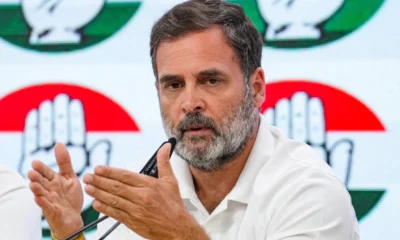

Rahul Gandhi attacks G RAM G bill, says move against villages and states
-
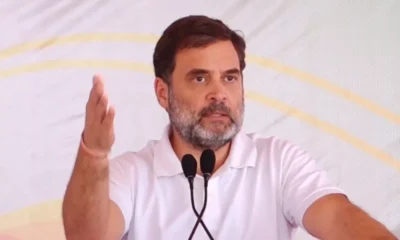

Rahul Gandhi Attacks Centre over G RAM G bill, calls it an attack on MGNREGA’s core principles
-


PM Modi likely to be felicitated for GST reforms at BJP workshop
-
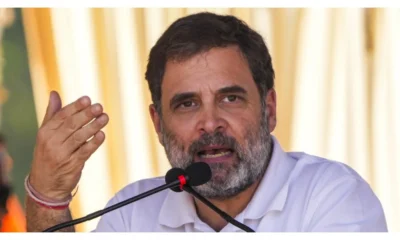

Rahul Gandhi slams Centre over alleged lathi-charge on SSC aspirants, calls it cowardly government
-
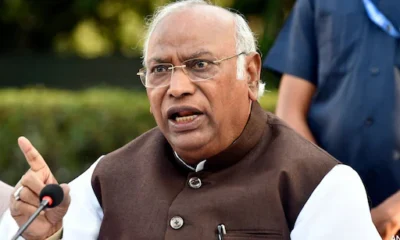

Jyotiraditya Scindia hits back at Kharge over Digital India criticisms, cites telecom reforms
-


Zealots can distort my words, Tharoor responds to uproar over his remarks on India’s terror response under Modi govt
India News
Thick smog engulfs Delhi, flights and trains delayed as air quality slips to very poor
Delhi remained under a thick smog cover as air quality dipped into the very poor category, causing delays in flights and train services due to low visibility.
Published
1 day agoon
December 20, 2025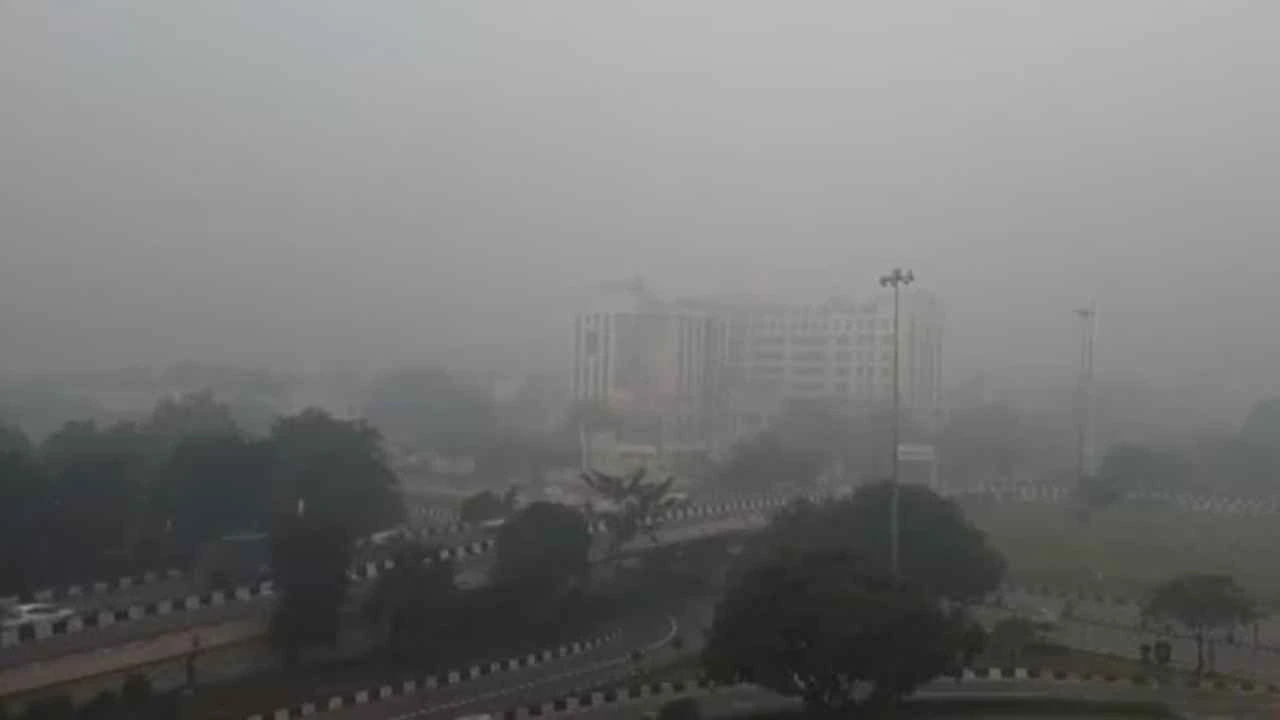
A dense blanket of smog covered Delhi on Saturday morning, pushing air quality into the ‘very poor’ category and disrupting flight and train operations across the national capital and adjoining areas. Reduced visibility due to smog led to delays in air and rail traffic, while authorities warned that pollution levels could worsen further in the coming days.
The Air Quality Index (AQI) in Delhi was recorded at 380, placing it in the ‘very poor’ bracket. Visuals from Bhairav Marg near Pragati Maidan showed motorists using headlights during early hours, as visibility remained low. At around 7 am, the AQI at this location stood at 433.
Nearly half of Delhi’s air quality monitoring stations reported ‘severe’ pollution levels. Anand Vihar recorded an AQI of 428 with PM2.5 as the dominant pollutant, while Jahangirpuri reported an AQI of 425.
Transport services hit by low visibility
Flight operations at Delhi airport were impacted due to low visibility conditions. The airport issued an advisory asking passengers to check with their respective airlines for updated flight information, as low visibility procedures were in place. Runway visibility was reported to be between 800 and 1,200 metres.
Live flight tracking data showed multiple flights running behind schedule. One airline also warned passengers about possible disruptions at several airports in northern and eastern India, including Delhi, due to dense fog conditions. Travellers were advised to verify flight status before heading to the airport, with options offered on select flights to reschedule or seek refunds without additional charges.
Rail services were also affected, with more than 30 trains running late by an average of three to four hours. Some long-distance trains reported delays of over six to eight hours, causing inconvenience to passengers travelling to and from the capital.
Air quality likely to worsen
The weather department had earlier forecast dense to very dense fog at isolated places over Delhi and several parts of north and central India. According to the Air Quality Early Warning System for Delhi, pollution levels are expected to remain in the ‘very poor’ category on Saturday and may slip into the ‘severe’ category on Sunday and Monday. In view of the deteriorating conditions, an ‘orange’ alert has been issued for Saturday.
India News
PM Modi inaugurates India’s first nature-themed airport terminal in Assam
Prime Minister Narendra Modi inaugurates the new nature-themed terminal at Guwahati airport, the largest in Northeast India, built around bamboo, orchids and regional heritage.
Published
1 day agoon
December 20, 2025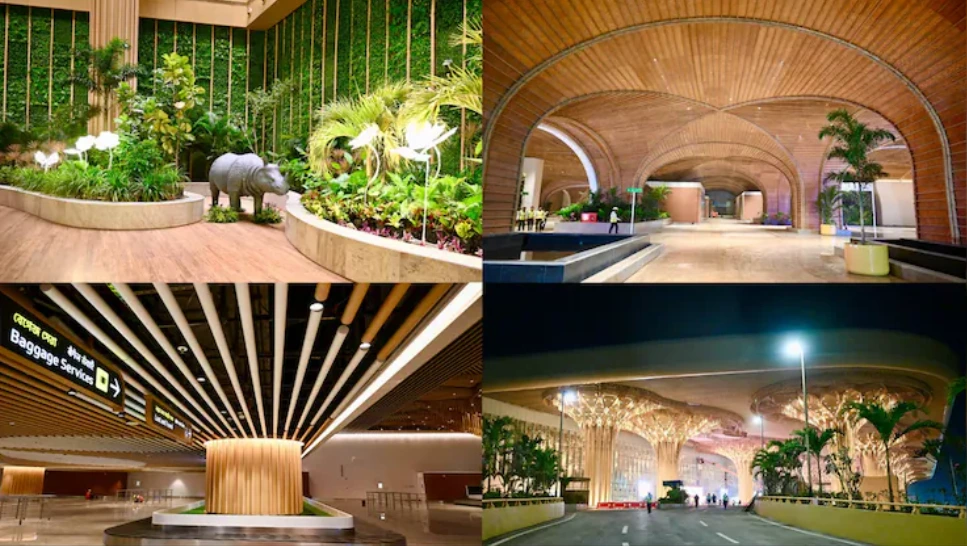
Prime Minister Narendra Modi is set to inaugurate the new terminal building of Lokapriya Gopinath Bordoloi International (LGBI) Airport in Guwahati today, marking a major milestone for aviation infrastructure in the Northeast. Built at an estimated cost of around Rs 4,000 crore, the facility is being projected as the largest airport terminal in the region and a key boost to connectivity, tourism and economic activity in Assam.
The Prime Minister is scheduled to arrive in Guwahati around 3 pm as part of his two-day visit to the state.
Northeast’s largest airport terminal takes shape in Guwahati
The newly constructed terminal is nearly seven times larger than the existing one and has been designed to cater to the region’s rapidly growing air traffic. Once fully operational, it is expected to handle up to 13.1 million passengers annually by 2032.
Officials said the terminal is planned as a regional connectivity hub, with a focus on strengthening air links between India and Southeast Asia. The airport will be capable of handling up to 34 air traffic movements per hour, the highest capacity among airports in the Northeast. The facility will also be equipped with one of the most advanced Instrument Landing Systems to support safer and more efficient operations.
Nature-inspired design rooted in Assam’s identity
What sets the Guwahati terminal apart is its distinctive nature-themed architecture. Conceptualised under the theme “Bamboo Orchids”, it is being described as India’s first airport terminal inspired entirely by natural and cultural elements.
The interiors draw from the landscapes of Northeast India, with design elements reflecting indigenous orchids, locally known as Kopou Phool, and the flow of the Brahmaputra river. The terminal incorporates more than 2,000 species of plants, includes a dedicated zone inspired by Kaziranga National Park, and features artefacts representing Majuli Island.
A key architectural highlight is the expansive bamboo vault, created using around 140 metric tonnes of locally sourced bamboo. The space has been envisioned as a multifunctional cultural centre aimed at encouraging community interaction and showcasing the region’s heritage. Design elements such as japi motifs, the iconic rhino symbol and 57 orchid-inspired columns further reinforce the cultural narrative.
Arriving passengers will also experience a unique “Sky Forest”, featuring nearly one lakh plants of indigenous species, designed to create an immersive forest-like ambience within the terminal.
Focus on digital integration and passenger convenience
Spread over nearly 1.4 lakh square metres, the integrated new terminal has been designed to handle around 1.3 crore passengers annually. It is supported by significant upgrades to the runway, airfield systems, aprons and taxiways.
The terminal places strong emphasis on digital integration, with 14 entry points, including four DigiYatra gates, aimed at easing passenger movement. Facilities such as full-body scanners for non-intrusive security checks, automated baggage handling systems, fast-track immigration and AI-driven airport operations have been incorporated to ensure smoother travel experiences.
Other engagements during PM Modi’s Assam visit
During his two-day stay, the Prime Minister will also lay foundation stones for multiple development projects and address public gatherings. He is scheduled to visit the Swahid Smarak Kshetra to pay tribute to the martyrs of the historic Assam Movement.
Later in the day, PM Modi will perform the bhoomipujan for a new brownfield Ammonia-Urea Fertiliser Project at Namrup in Dibrugarh district, within the existing premises of the Brahmaputra Valley Fertiliser Corporation Limited.
India News
Assam train accident: Eight elephants killed after Rajdhani Express derailment in Hojai
Eight elephants were killed after the Rajdhani Express collided with a herd in Assam’s Hojai district, causing multiple coaches to derail and disrupting train services.
Published
2 days agoon
December 20, 2025
At least eight elephants were killed and a calf was injured after a herd collided with the Sairang–New Delhi Rajdhani Express in Assam’s Hojai district, leading to the derailment of the locomotive and five coaches early Saturday. Railway officials confirmed that no passengers were injured in the incident.
Forest department officials said the collision occurred when the New Delhi-bound Rajdhani Express struck a herd of elephants on the tracks. The impact caused multiple coaches to derail, disrupting rail traffic on the busy route connecting the Northeast with the national capital.
Train services hit, passengers shifted to other coaches
Following the derailment, rail movement towards Upper Assam and other parts of the Northeast was affected due to damaged coaches and elephant remains scattered on the tracks. Accident relief trains and senior railway officials rushed to the site to restore services.
Passengers travelling in the affected coaches were temporarily accommodated in vacant berths in other coaches of the same train. Officials said that once the train reaches Guwahati, additional coaches will be attached to ensure all passengers can continue their journey.
Collision occurred outside designated elephant corridor
According to officials, the accident took place at a location that is not marked as a designated elephant corridor. The loco pilot reportedly applied emergency brakes after spotting the herd on the tracks, but the elephants ran into the train, resulting in the collision and derailment.
Forest authorities confirmed that eight elephants died on the spot, while one injured calf was rescued. Local residents said the herd consisted of around eight elephants at the time of the accident.
Elephant deaths in train accidents remain a concern
The incident comes amid continued concerns over wildlife deaths on railway tracks. Data shared by the Environment Ministry in Parliament earlier showed that at least 79 elephants have died in train collisions across India over the past five years, based on reports from states and Union Territories.
The ministry has said that several preventive steps are being taken in coordination with the Railways, including speed restrictions in elephant habitats, use of sensor-based detection systems, and construction of underpasses, ramps and fencing at vulnerable locations. Guidelines and capacity-building programmes have also been introduced to reduce human-animal conflict along railway lines.

India announces T20 World Cup 2026 squad, Shubman Gill dropped as Axar Patel named vice-captain

Veteran Malayalam actor and filmmaker Sreenivasan passes away at 69

T20 World Cup 2026: Selectors weigh Shubman Gill role as India squad announcement awaited

Thick smog engulfs Delhi, flights and trains delayed as air quality slips to very poor




